Category Archives for "Creative Writing"
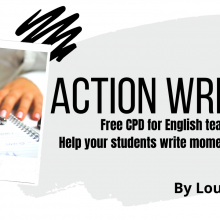
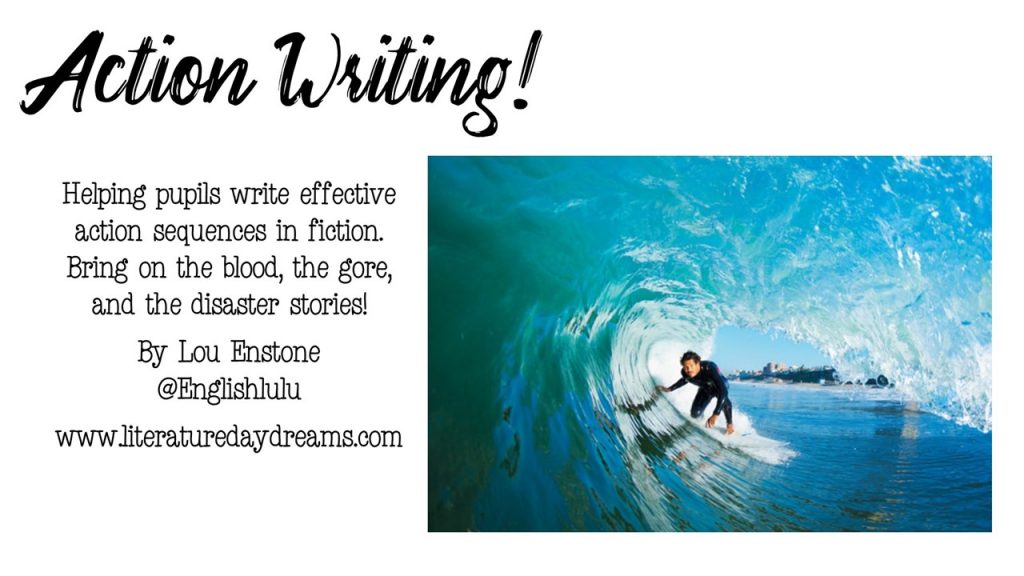
It was a real joy this summer to participate in Team English National Conference Online. My recorded session is available for you to watch for free here – on YouTube. Below you can download my slides – if that would be useful.
My session covered:
Action? Drama? Blood? Violence? Do your students want to write these stories? Do you never want to mark another mediocre action story?
If your answer is yes, then this free CPD training is for you! If you know students who want to write action sequences, fight scenes, and even gruesome murders, then now is the time to teach them to do it well.
This session will help you with some clear and practical strategies to use in your classroom.
This free creative writing CPD includes:
– my favourite Creative Writing CPD books
– exploring short story writing at school!
– examples of student writing
– Activity 1 – nouns for writing action
– Activity 2 – creating a shot by shot scene
– Activity 3 – adding urgency and interruptions
– Mentor texts
– Recommendations for further reading

A while ago on Twitter, I shared some photos from my Year 10’s books showing how I introduce Creative Writing at the beginning of the academic year.
Lesson 1: an exploration of what makes sophisticated writing. Followed by sensory description, which is self-assessed, and vocab hwk. pic.twitter.com/yn02s8kSvd
— Lou Enstone (@englishlulu) November 17, 2019
This blog post gives a quick overview of how I introduce Creative Writing to my new GCSE students. Before I start a little bit of context (mostly for my friends in the US). I use these lessons at the very beginning of Year 10 (students will be turning 15 during this academic year), it is a brief introduction to narrative writing. My students sit national standardised exams at the end of a compulsory 2-year English Language course. This examination includes creative writing. In fact, writing makes up 50% of the examination grade and of this, creative writing is 50% again. The next vital fact is that students must achieve a certain pass grade in their English Language GCSE – otherwise they must retake!
For my UK based teacher-friends, my school sits the Edexcel exam board. For the creative writing section, they are given a choice of 2 narrative prompts. No pure description. So these are working towards narrative.
Phewee, ok, now that’s over. Let’s get into the writing!
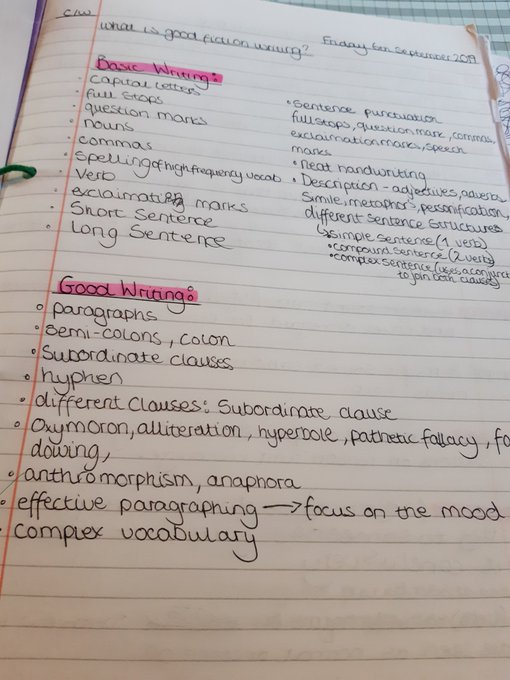

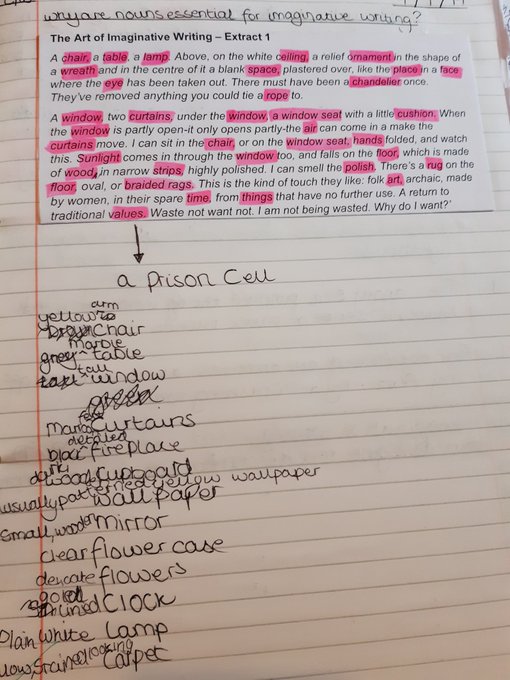
I am sharing two versions of this lesson. One with an extract from The Handmaid’s Tale (I tend to use this with my older students) and then one with an extract from Harry Potter (hey, don’t judge it). Just click to download the files.
Once my pupils have mastered writing accurate description, we move onto looking at how we add atmosphere to settings. It could be just one sentence, just one phrase to take description from simple to layered with sub-text. This is where I want my students to focus.
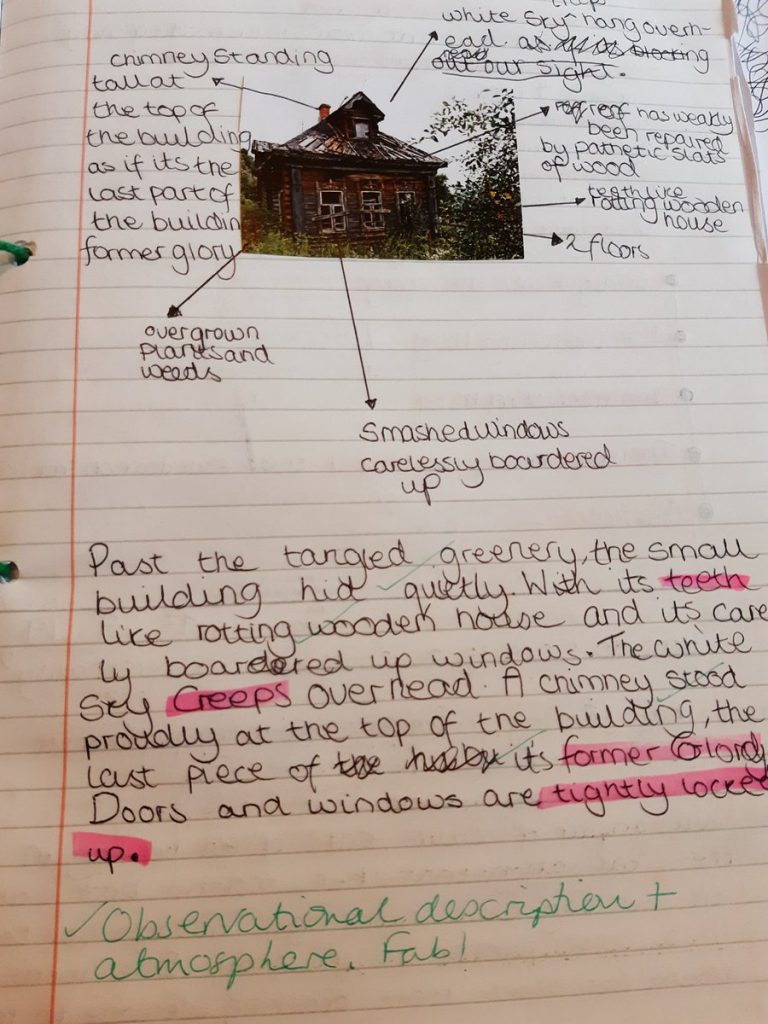
I have a lot to say about writing characters and well, writing short stories in general. So this is going to have to be a summary.
Lesson 5 consists of planning a story – we spend a lot of time talking about structuring stories, more on this later.
As soon as I have other posts finished, I’ll link them here. So far the plan is:
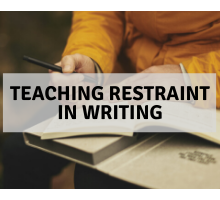
This blog post is a few years old now (I think I first published it in 2011), so many things in my teaching have changed since them, however, this necessity for restraint in description is something that has never left my practice. So, enjoy…
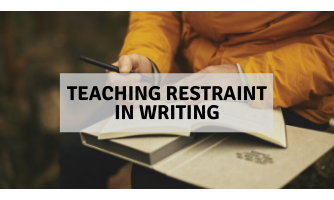
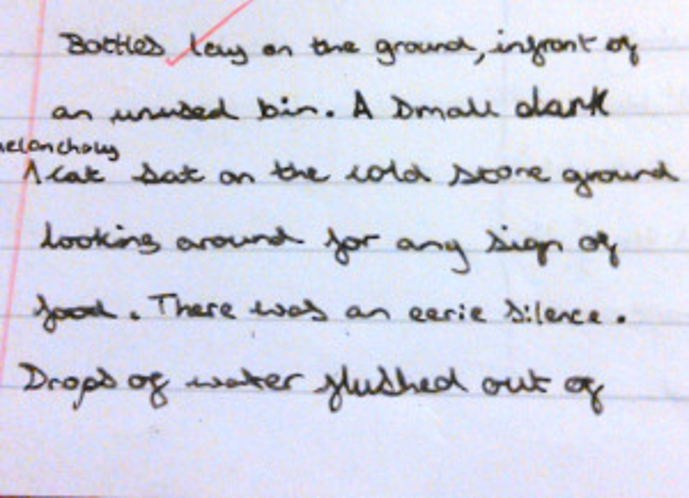
This was written by one of my year 7 students. It reads:
Bottles lay on the ground, in front of an unused bin. A small dark melancholy cat sat on the cold stone ground looking around for any sign of food. There was an eerie silence. Drops of water flushed out…
It continues in a similar vein for several paragraphs.
This is the picture the student was describing:
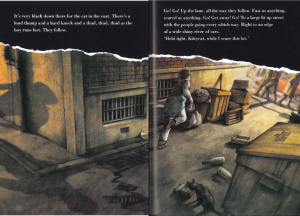
Many students believe that good writing is technique heavy. Perhaps because they don’t read widely, perhaps they don’t read regularly. So they are convinced that adjectives and adverbs are what’s needed. i want students to be able to write with subtlety and sub-text. They can learn when to withhold and when to run free.
If we layer technique upon technique, our writing can become cumbersome and over-embellished.
When I ask my pupils what good descriptive writing looks like – this is what they seem to think I want.
The curse of “show and don’t tell” has meant that pupils as writers are spoon-feeding their readers on a whole new level. Don’t show and don’t tell is perhaps a better maxim. (A side note on this – when we teach students techniques like ‘show and don’t tell’ remember they internalise language and I end up marking GCSE exam papers that read “The writer’s use of show and don’t tell suggests…) As I said, don’t show and don’t tell is sometimes better.
The literature that we study at school is only worthy of study because we have to study it. The reader’s interaction with the language of text – gleaning meaning where it is hidden, is what we do when we analyse. It’s not easy to write an essay paragraph using the quote “He slammed the fork down angrily” as there is nothing to infer. The writer has set it out for us.
When we teach pupils that they must create such a vivid image for the reader and that they must include as much detail as possible. Then we leave our readers with no work to do. Often their writing is filled with subjective emotional language, but by placing this into the text, they have robbed the reader of their own reaction.
I am teaching a scheme of work studying Mystery and next week we are due to start reading Poe’s Murders in the Rue Morgue. In order to get into the mystery swing of things – this week I wanted pupils to pare back their writing, by writing description as detectives.
The lesson began with this extract from The Road by Cormac McCarthy (*klaxon* you might not want to use this text with every class!)
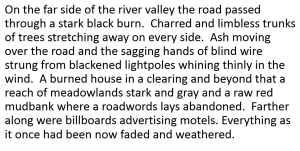
As detectives, pupils identified all the nouns and then explained what exactly was being described. I then asked them to remove all the grammatical words to force their focus on to the nouns and noun phrases. Finally we identified the adjectives.
By focusing on the nouns – students were more able to understand the ‘mystery’ in this extract. It almost sounds counter-intuitive but this literal description allows for detailed inference – “the sagging hands”.
Students had to explain this forensic, scientific approach to writing, that did not use any emotional, subjective language. They described McCarthy’s landscape as realistic or ‘true’ as the students named it.
This image then required a detective’s eye to describe. We started with nouns – precise and detailed.
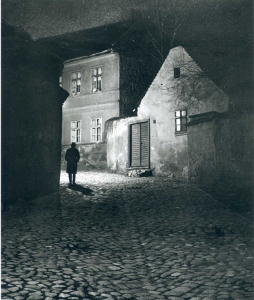
A few we listed were:
– a man, wearing an overcoat and hat
– a shuttered door
– four windows with six panes
– a building with high eves
Next I asked pupils to describe these nouns in the most scientific way possible and I asked why the sentence below is not forensic.
The shadowy, mysterious path went up to the crumbly, ancient building.
It was this part of the lesson that resulted in the most discussion and debate among students.
“You can’t use ‘eerie’ since when would a detective say it was ‘eerie’?”
“Gloomy is out – right Miss?”
“How can I say the building is old without exaggerating, it’s not ancient.”
By giving students the vocabulary ‘subjective’ and ’emotional’ they were able to critique their own ideas. Often writing down and then removing words that were considered to be weak.
The final 15 minutes of the lesson was spent writing just 10 sentences of scientific description. Here are some of their attempts:
On the face of it, this ability to show restraint in writing allows students to write in a manner that is more ‘true’.
Subjectively, I think this writing is closer to ‘good writing’ than writing that is created via a checklist of word types, sentence types, and techniques. It would certainly uphold more analytical scrutiny.
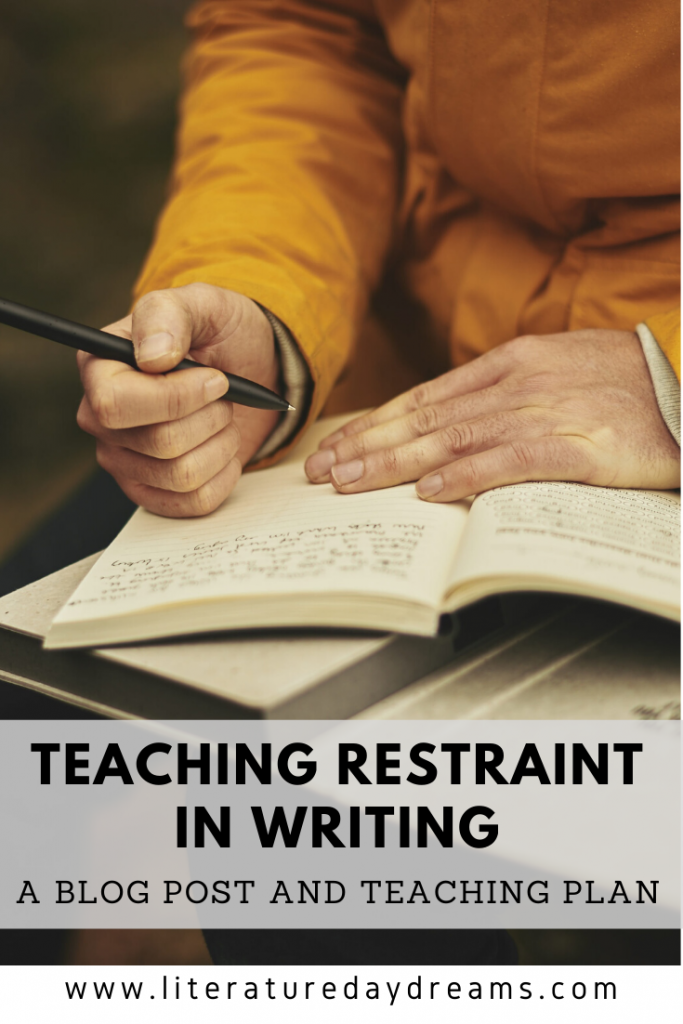
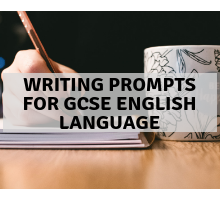
Below I have shared 5 different types of writing prompts for you to use this week with your classes! If you are preparing your classes for GCSE English Language, or any type of creative writing, then these writing will be great for you to use!
Choose one room in your house and list everything that can be: seen, smelt, heard, felt (and tasted).
Write 100 words describing this room using only sensory imagery.
When you have finished writing, ask yourself this question – were you able to create a sense of the room with this tightly controlled word count? If not, consider why? Look at your nouns and adjectives, are they specific and precise? Did you waste words? Make just 5 changes and see if this improves your writing.
Both of these writing prompts are great for s-l-o-w writing. Slow writing is the opposite of a quick write. The idea is to write slowly, precisely, carefully, selecting each word intentionally. Slow writing can take 5 minutes with one sentence and 30 minutes with a paragraph. Write these moments of action (or inaction), imagine them in slow-motion. Try and recreate this in your description.
This one is super easy. You can just click here and download the free PDF – inside you will find 12 descriptive writing tasks for your students to complete over 12 days!
So you can download this free one-page worksheet of writing tasks here!
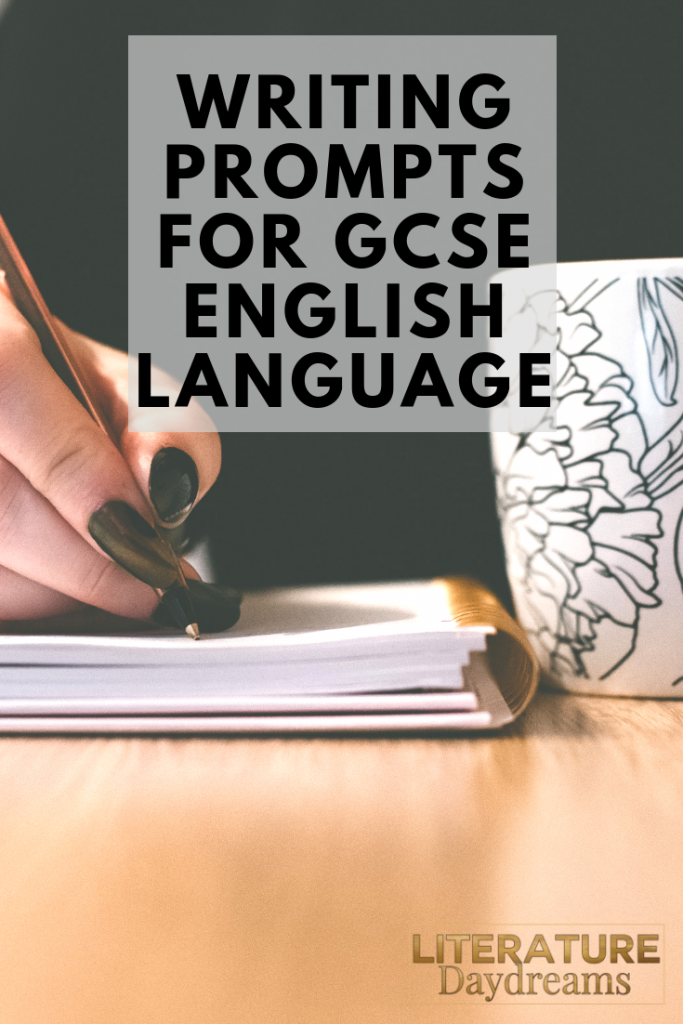
If you love these writing prompts, then sign up for my weekly “Writing on Wednesday” email. Each week I send out fresh and fun writing prompts to all my email friends! Just sign up below.

*I send emails with teaching tips, tricks, and free resources to my subscribers regularly. I value your privacy and you can learn more about how I handle your data in our private policy. You can unsubscribe at any time.

I love using short films in my classroom. I bet you already have a collection that you like to you. I’m not different. I use short films for a bunch of different reasons: to introduce a new idea, or to explain something we all found complicated. Sometimes to inspire discussion and debate, or to get stuck into some creative writing. Short films are fabulous for both literature and writing.
So, here are my top 5 favorite films for high school ELA. I’ve split them so you have:
I love using this short reading of the children’s classic, The Tiger Who Came to Tea, with my older literature classes. In fact, I used to only use with my senior students who are studying literature and needing to apply different critical theories. Over the last few years, I have been using it as a debate prompt with my younger students as well.
The first question I ask is “what does this text tell us about society?”.
https://www.youtube.com/watch?v=eob3MtLkgK0
At this point, I introduce critical theory. Gender and feminist theory and also Marxist theory. *Warning* – this discussion does result in some criticism of Judith Kerr’s text. It’s great to consider the narratives that shape our understanding of the world as children, but it’s not always a comfortable discussion.
We discuss:
At this point, I might draw a comparison between this text and invading forces: the Nazis in Poland, Judith Kerr has spoken of this being the inspiration for her story. The discussion is often lively.
An interesting counterpoint to this story is the another children’s story – Where the Wild Things Are. Here we develop our discussion to include colonization, imperialism, and how other races and ‘the foreigner’ can be represented in literature.
Again the discussion is often lively.
Copy Shop is an unusual silent film by Virgil Widrich, 2001. It received an Oscar nomination for a short action film. The film is 12 minutes long and ‘tells’ the story of a man who accidentally photocopies himself until ‘he’ takes over his town.
Just this concept alone is intriguing enough for students!
I often begin this lesson by asking students to mind-map all of their thoughts on the topics of:
These thoughts can be as generic or as specific at you decide. I generally put these topics on the board and then pose the question “write down everything that comes into your mind”.
After watching the film, sometimes twice, I ask students to add ideas to their mind-maps based on the film. For identity and society – we discuss how we are shaped as individuals, how society shapes us into a particular mould. For gender and relationships – students often notice that the single female is replaced by the male, that the relationships show companionship, then threat. For reality – we discuss to what extent we can trust our senses, what we see.
The final step is to debate some of the big ideas in literature:
I could go on!
I use this short and sad story for a variety of different reasons with my classes: writing flashbacks, relationships, realistic dialogue, incidents, and memory writing.
It’s a poignant tale and dedicated to survivors of Leukaemia, a sensitive one to use with classes but often generates excellent sympathetic debate and great emotionally intelligent writing.
*Warning* – this short film is the epitome of suspense and then a moment of terror. Your class will scream. Please, please, please watch through till the very end before you decide to use it! Don’t look away at the end, otherwise you might miss ‘it’! To be absolutely clear – you get a glimpse, the most fleeting glimpse of ‘it’.
Ok, you survived! Here’s how I use this film: to build tension, to create a character who has no idea what is about to happen next.
This short film is fantastic for writing a realistic moment of suspense – rather than one that is filled of creaky staircases and slamming doors. Write a character who has literally no idea what is about to happen to them!
You need to be speedy with the pause button here. I watch with kids up to the bit where the man collects his keys. Then pause. We write this opening section as descriptive narrative.
Then we watch – pause – write until the very end. As the students haven’t seen the whole thing – when they first see the figure – they are shocked, their character can be shocked. So their writing is often much more authentic, than if we had planned it in advance.
It’s great for writing genuine expressions of a character’s experience of cluelessness to horror.
Another one from the guys at the Jubilee Project, I do love them, and to be honest you could use any of their films effectively in the classroom.
But Fireflies is something special.
I pose a bunch of questions when using this film, sometimes before, sometimes after, sometimes both!

This short film is actually an extended advertisment for the outdoor clothing company Patagonia. Sean Villanueva O’Driscoll is on the road talking about climbing and about his very patched and repaired jacket. It’s such a beautiful film and would be great as a writing prompt. Here it is “The Stories We Wear by Patagonia”.
These British 100-year-olds talk about their lives, their experiences, and they dispense advice about how to be happy. Sit back and prepare to get emotional! Find it here “life lesson from a 100-year-old”
As this is a classic English Literature GCSE text, I cannot resist this Jekyll and Hyde song. Dr Jekyll and Mr Hyde…when a good man releases his evil side…Mr Hyde and Dr Jekyll…who are the characters when the dust settles? 🙂
Enjoy all the chuckles here “Jekyll and Hyde characters song”
Alma is such a great short cartoon, it’s absolutely perfect for creative writing. It is silent, sinister, and completely mesmerizing. Watch Alma here
I promise to keep adding to these as I find them, but do drop your favorites in the comments below!
While you are here, please do consider signing up to receive my weekly creative writing email, titled Writing on Wednesday. Every Wednesday, I email out my teacher-friends a writing prompt or some writing advice.

It is an absolute pleasure that I have joined a group of a-m-a-z-i-n-g secondary bloggers to bring you the 12 Days of December Blog Hop and Giveaway! So grab a cuppa, snuggle up, and enjoy. Click here to find out more about the 12 Days of December Blog Hop.
So – here’s my seasonal serving of Christmas cheer!

Christmas is a timing of giving, right?! But it doesn’t have to be about spending money, sometimes a hand-made-with-love gift is worth more than anything store bought. So in my classroom (with my pretty cynical London teens) we make and give cards to teachers, support staff, dinner ladies, traffic wardens – in fact any adult in our school.
These FREE card templates are super cool, slick, and modern design. If your teens aren’t interested in Christmas cottages or cuddly Santas, then these FREE card templates are just for you and your students. There are 10 designs to download and print yourself >>>here<<<. Just print, give to your students, color and spread some Christmas joy!
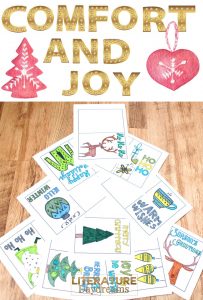 We color them for teachers in other subject areas to say thank you. We color them for support staff and dinner ladies, who are always there with a smile and a joke. We color them for our friends to remind them we care. We color them for family because nothing’s better than a homemade gift – right?! And finally we color them for the residents in our local area, we drop them through their letterboxes to wish them the best of year.
We color them for teachers in other subject areas to say thank you. We color them for support staff and dinner ladies, who are always there with a smile and a joke. We color them for our friends to remind them we care. We color them for family because nothing’s better than a homemade gift – right?! And finally we color them for the residents in our local area, we drop them through their letterboxes to wish them the best of year.
This year, for the first time we will color them for the elderly residents of a local care home. Many are alone, many will have no visitors at all over Christmas. This year, we hope to bring them joy.
If you love the idea of creating Christmas Cards with your students, then check out this hilarious Christmas Card poem writing lesson. Teach your class anaphora, anadiplosis, epistrophe, and other rhetorical devices to create some classic festive card poetry.
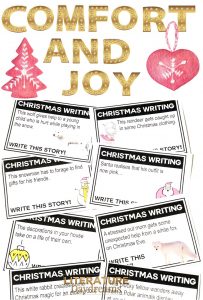 Christmas is a fantastic time of year for creative writing activities. Here are a few of my favorites!
Christmas is a fantastic time of year for creative writing activities. Here are a few of my favorites!
The UK department store, John Lewis, is famous in England for having wonderful, cosy, uplifting, heart-warming, and generally all-round wow Christmas TV advertisements.
These adverts make wonderful writing prompts. Just show the advert to your classes and give them the writing prompts below! Here are my favorites:
https://www.youtube.com/watch?time_continue=50&v=M0zZScVSMEw
Writing prompt: describe someone struggling to wrap an awkward present.
Make sure you watch this one to the very end! Writing prompt: describe that ‘bed-time on Christmas Eve’ excitement.
https://www.youtube.com/watch?v=iccscUFY860
Writing Prompt: Write a narrative where a wild animal brings unexpected joy at Christmas!
If you enjoy these writing prompts, then you might also like my Christmas Fun Writing Prompt Bundle.
If you are looking for something a little different for your Literature classroom this Christmas then perhaps you could host an Elizabethan Christmas. If you teach Shakespeare at this time of year, then this question might have popped into your brain!
Well, in short – I would say – an Elizabethan Christmas was chaotic fun, social, and full of beauty. An easy way to introduce your students to this would be to pose the question: “what did everyone eat for Christmas dinner in 1588?” Let them guess. The answer is not surprising and surprising all at once. Goose. Goose wasn’t the usual meal for everyone at Christmas time in those days. But in the year 1588, by Royal decree, everyone in England was to eat goose. Why, I hear you ask? Because a goose was the first animal that Queen Elizabeth I saw after hearing that the Navy had defeated the invading Spanish Armada! (Thankfully it was a cat or a horse!)
This host an Elizabethan Christmas set contains hours and hours of fun. The centerpiece – or showstopper – is group work activity where each group brings a gift to your Christmas celebration. They research, and then make an object to represent six elements of Christmas for the Elizabethans. The Christmas Candle, the Yule Log, the Dawn Mass, the Feast and more.
Your students will work together, learn a great deal about an Elizabethan Christmas, they will have fun, and build community in your classroom. What better way to bring comfort and joy this Christmastide!
Don’t forget to find to check out what treats my secondary seller friends have in store for your this season. Click here to find all the details. A-n-d don’t forget to enter our Giveaway for a chance to win some amazing prizes!

*I send emails with teaching tips, tricks, and free resources to my subscribers regularly. I value your privacy and you can learn more about how I handle your data in our private policy. You can unsubscribe at any time.

If you are looking to liven up your creative writing teaching or your students need some fresh ideas to improve and develop their creative writing in class – then this blog post is for you!
Below are 5 of my favourite ways to mix things up a little when I am teaching creative writing!

These writing prompts focus on s-l-o-w writing. Slow writing is the opposite of a quick write. The idea is to write slowly, precisely, carefully, selecting each word intentionally. Slow writing can take 5 minutes with one sentence and 30 minutes with a paragraph.
This writing task is all about describing the same setting at three different points during the day. You can use different settings, for example, I sometimes use the grounds at my school.
I use these 3 prompts in different ways. Sometimes I do gradual writing with students and they write each one, in turn, changing – shaping – adapting their own funfair as the day passes.
Another way is to put your students into triad groups and have them write one each. They can then share and improve based on the best bits of each other’s writing.
I love to use open lines as a writing activity with my classes because it always amazes me where students will go with the same opening. You could give them one line and end up with 30 completely unconnected stories.
Below are the 3 opening lines that I found to create an excellent and diverse range of stories:
I started teaching Khaled Hosseini’s A Thousand Splendid Suns this week and it is a joy, an absolute joy to get stuck into such a beautiful piece of writing.
Re-reading the opening, I am always reminded of how much our landscapes shape who we are. Let me transport you for a moment. If you don’t know the novel, a shunned woman and her illegitimate daughter are sent to live in a shack isolated in the countryside of Afghanistan.
Here is Hosseini’s description: It was on the outskirts of Gul Daman. To get to it, one took a rutted, uphill dirt track that branched off the main road between Herat and Gul Duman. The track was flanked on either side by knee-high grass and speckles of white and bright yellow flowers. The track snaked uphill and led to a flat field where poplars and cottonwoods soared and wild bushes grew in clusters.
I love how Hosseini highlights their isolation, the mother’s ‘off track’ actions, the ‘uphill’ life they lead, and a hundred other details in his description.
It would make a great mentor text example for a piece of descriptive writing. For example: create a description of the landscape of where you live, the nature rather than the buildings. BUT as you describe it, give the details in the landscape significance to show something about your own life experience.
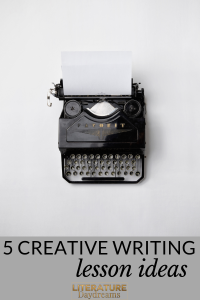
[social_warfare]

*I send emails with teaching tips, tricks, and free resources to my subscribers regularly. I value your privacy and you can learn more about how I handle your data in our private policy. You can unsubscribe at any time.

Do your students just l-o-v-e writing spooky stories? My students cannot get enough of creative writing around this time of year. But if I’m honest, real talk here, some of their story ideas can be a little bit immature, a little bit samey. Sometimes I feel like they are doing their own versions of some of ‘those’ films. Does this happen in your classroom?
Today, I am going to let you in on my strategy for pushing students towards originality in their own writing. *Yes! Happy Dance!* The strategy: don’t use story prompts; use story starters.
A story prompt sets up a premise for a narrative. Generally a prompt sets up who the main character is and what the setting is, it might also prompt the key event. It would read something like “a student is walking home late at night, they become afraid”. You can see how 30+ really different students, might come up with 30+ really similar ideas with this prompt. You can imagine it now can’t you? The student hears noises, they look behind them and see nothing, they run, something / someone grabs them… it turns out to be a) an axe murderer, b) one of the parents, or c) a friend.
But a story starter. That’s different. A story starter provides the first line or couple of lines of a story. Something like “The phone rang. The door slammed.” You can see already that this story starter doesn’t provide the writer with any information, or least only a teeny bit. Enough to get the brain whirring. But not so much that it confines writers in the space of predictability.
This week I shared with my subscriber list “20 story starters” that are perfect for Halloween. Today I am going to share 10 with you right here!
Love them? Me too. I surely hope you can use them in your classroom. As part of your daily writing, or perhaps as part of your creative writing unit, or as a Halloween special.
If you think these writing prompts are JUST what you need, then this is for you. To save you time, to help claim back a tiny bit of ‘your life’ I have created 20 pages of Halloween story starters and 20 pages of writing instruction that is ready to print and go!
This ready-to-go resource contains 40 pages of Halloween writing activities. The story starters are totally fresh and new. No repeats. Each page is beautifully designed. In addition to these new story starters, each one comes with a page of planning, techniques and new vocabulary to help your students nail their spooky stories! This resource is available both as a >>>paper version<<< and as a >>>Google Drive digital edition<<<.

*I send emails with teaching tips, tricks, and free resources to my subscribers regularly. I value your privacy and you can learn more about how I handle your data in our private policy. You can unsubscribe at any time.

*I send emails with teaching tips, tricks, and free resources to my subscribers regularly. I value your privacy and you can learn more about how I handle your data in our private policy. You can unsubscribe at any time.
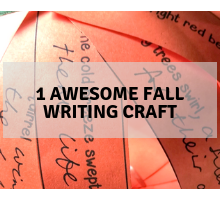
Did you love my Fall Writing Craft Activity as much as I did? Yes? Want to download the free writing prompts so you can use this craft activity straight away?
Just fill in your details below!

*I send emails with teaching tips, tricks, and free resources to my subscribers regularly. I value your privacy and you can learn more about how I handle your data in private policy. You can unsubscribe at any time.
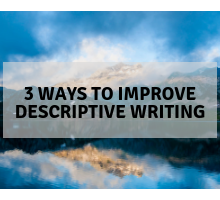
Writers can never get enough opportunities to write more detail. We live in the cracks on the pavement and the blank spaces between letters. Here are 3 quick writing activities that you can set your students to help them improve description and descriptive writing.
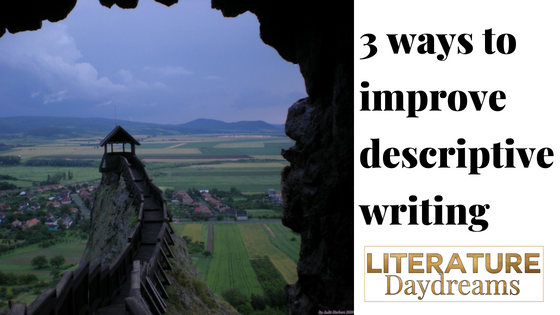
Here’s a quick-write task you can to practise the skill of ‘finding all the details‘. Choose one room in your house and list everything that can be: seen, smelt, heard, felt (and tasted). Write 100 words describing this room using only sensory imagery. When you have finished writing, ask yourself this question – were you able to create a sense of the room with this tightly controlled word count? If not, consider why? Look at your nouns and adjectives, are they specific and precise? Did you waste words? Make just 5 changes and see if this improves your writing.
Description isn’t always just about giving an accurate observation of something. Sometimes it’s about seeing it deeply. Perhaps we need to look into the heart of things before we can describe them well. Use these quick-write tasks to practise this skill:
Slow writing is the opposite of quick writing and quick writes. The idea is to write slowly, precisely, carefully, selecting each word intentionally. Slow writing can take 5 minutes with one sentence and 30 minutes with a paragraph.
Imagine this scene: It is sunset and you are waiting for your friends, who are late. Describe the setting as the day moves towards darkness.
So how can you slow your writing down? you are waiting, probably bored, perhaps a bit annoyed. Now,
s-l-o-w your writing down, exactly like time seems to have slowed down while you are waiting. Walk your reader through the tick, tick, tick of your watch as you wait.
If you enjoyed these writing tasks and prompts then you should check out my writing prompt sets on TeachersPayTeachers. You can find them here.
